Owners of large plots can afford the installation of large heated and unheated greenhouses. In closed beds you can grow thermophilic vegetables in cold regions or get a crop of any crops in the first half of summer. Those whose cottage occupies a relatively small area, large structures are not suitable, have to look for other options. A good solution is the Butterfly greenhouse, it is small, convenient and easy to install, dismantle and transfer to another location. Mini greenhouse You can do it yourself using ready-made schemes.
Content
Construction characteristics
The Butterfly Hotbed is a small, convenient design that allows you to plant garden crops before conditions that are comfortable for them are established in the open ground. In such a greenhouse warm air is well retained, and the outer cover transmits sunlight. In the greenhouse, you can easily create and maintain the optimal microclimate. The service life of the factory product is 10 years (subject to operating rules).
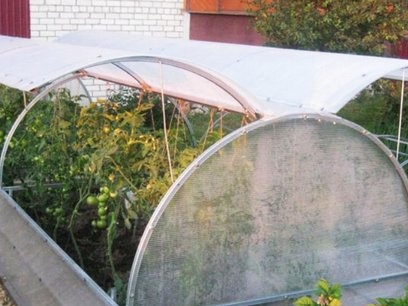
The compact structure is convenient in operation, it is easier to handle with it than with a greenhouse, but the functionality is almost the same. The process of caring for planted crops is greatly simplified, you do not need to walk along the beds, you can reach any plant from the edge. Space is saved inside the structure, since there is no need to equip paths between the beds. Types of Butterfly:
- Gable extended greenhouse with solid wooden walls at the bottom and straight windows at the top.
- The trapezoidal greenhouse is similar to the first option, but the lower walls are made of transparent material.
- Expanded building with arched high roof, solid wooden sides at the bottom.
- Completely transparent arched design. Base, frame made of metal.
Collapsible designs with step-by-step assembly instructions usually come on sale. To give stability, the edges of the frame are equipped with stakes that drive into the ground. Before buying or building a greenhouse, you need to study the pros and cons of the design.
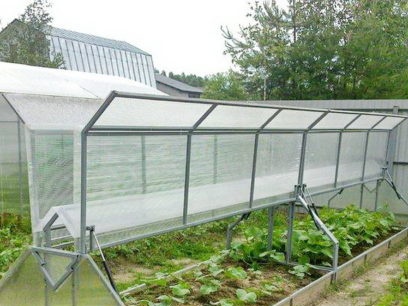
It is undesirable to rely on advertising, to believe the words of sellers, whose first task is to sell. To give a more detailed, reliable description, we studied the feedback of gardeners who already have experience in operating such a structure. Advantages:
- plant protection from the cold;
- resistance to wind up to 20 m / s;
- quick warming up in the sun;
- the ability to install in a small area, low design does not create shade;
- wide-open windows provide plants with optimal air exchange;
- simple installation and disassembly. The assembled design is easy to transfer to another place, transported in a passenger car;
- no need to establish a foundation;
- crops can be planted in 2 rows;
- long service life of a factory product;
- ease of plant care.
Many gardeners note that windows often have to be opened and closed. In places where there is at least minimal friction, paint quickly lags or collapses. Without a protective shell, the metal acquires rust. The same thing happens in parts of the frame where there are fasteners or bolts are screwed.Problem areas should be immediately cleaned, painted. The factory structures are very fragile, weak hinges on the doors, canopies on the windows, they quickly break off. Often, manufacturers leave incomprehensible instructions, so as not to make a mistake when assembling, you need to find it on the forums (for a similar product).
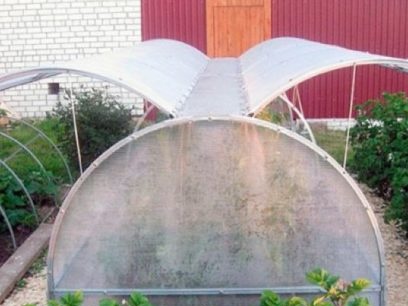
DIY greenhouse assembly
Depending on the needs, the greenhouse can have different sizes and shapes. For most gardeners, a scheme with standard sizes is suitable - a height of 1 or 1, 5 m, a width of 2 m, a length of 4 m. In the case of climbing plants, as well as tall plants, for example, indeterminate tomatoes, this height will not be enough. The height can be adjusted by installing the frame of the greenhouse on wooden sides.
Foundation not required, but experts advise nevertheless to equip the foundation from concrete or a bar of strong wood species (walnut, oak, ash, larch, etc.). This is especially important if the greenhouse is located in blown places or in a lowland where moisture constantly accumulates and additional drainage is needed. The foundation will strengthen the greenhouse, make it more stable. When choosing materials, it should be considered whether the design will be collapsible or solid. For the greenhouse of the first type, it is better to choose strong material for the profile and easy to cover.
| Material | Features |
| Metal | Reliable material, but if the finished structure is not painted, it will immediately rust |
| Wood | One of the easiest materials to process. Wood at constant humidity is susceptible to decay, as well as attack woodworms |
| Cellular Polycarbonate | Lightweight, durable covering material that does not collapse from light impacts, easy to install and handle |
| Glass | Also suitable for coating, the material is easily accessible, but very fragile, difficult to process |
| Dense polyethylene | The most accessible material, but will last no more than 1-2 seasons |
In the independent manufacture of the greenhouse Butterfly, they most often use a simplified scheme, take wood as a basis (construction in the form of a house). This construction option will not last long, therefore it is better to spend money once, but to build a reliable greenhouse from a metal profile pipe and polycarbonate. We describe the most common way of installing an arched mini-greenhouse with a width of 1, 3 m, a height of 90 cm when digging in, and on the foundation - 1, 12 m, 4 m long.
Preparation of materials and tools
In order for the greenhouse to perform the basic functions for sheltering, you need to choose a strong, durable polycarbonate that preserves the temperature and humidity inside any structures. The material must transmit light and at the same time protect plants from ultraviolet radiation. For a 4-meter greenhouse, a polycarbonate sheet of 2, 1 × 7 m is required. The following materials are needed for the frame:
- 2 end arcs and 1 middle;
- 3 cross beams (1260 mm);
- 4 upper stringers and 8 lateral (1978 mm);
- 4 stringers for sashes (1828 mm);
- 6 grousers (450 mm);
- pens;
- stops for sashes;
- 8 door hinges;
- 4 corner brackets and 2 intermediate;
- 32 triangular scarves and 8 square;
- 8 turntables;
- 32 corners.
Separate structural details should be interconnected only by fasteners - self-tapping screws (roofing and metal), nuts, screws, washers. Of the tools you will need: a marker, scissors or a sharp knife, tape measure, circular saw, hammer, screwdriver, manual or mechanical pipe bender and welding machine. All elements of the accessories are carefully selected, they must be strong.
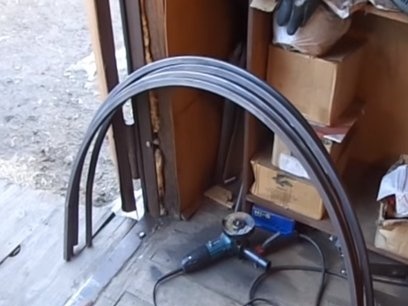
Step-by-step assembly instructions
First you need to prepare the site.The chosen place should be well-lit and even, experienced gardeners advise placing Butterfly from north to south. It is undesirable to install a mini-greenhouse in a lowland so that there is no risk of accumulation of excess moisture during rains. Immediately you need to take care of free access to the structure from all sides, such a greenhouse can not be placed too close to the hedges. The territory needs to be cleared of debris, remove the top layer of soil. Mounting:
- The frame is assembled by fastening the parts with a welding machine or bolts.
- Sashes are installed on fasteners (on the central beam).
- The metal is treated with an anti-corrosion agent.
- Polycarbonate is cut, first the side parts are attached, then on the “wings”.
- The frame is sewn up covering material screws with thermowells (it is advisable to use fasteners with gaskets), all seams are treated with sealant.
- On the sides of the window frames, supports are mounted (supporting the raised segments), and handles are also attached to the bottom of the hinged elements.
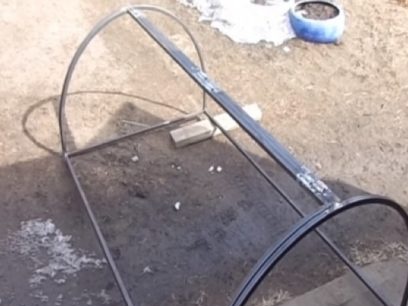
A greenhouse made by yourself will not differ from the purchased one, but several rules need to be observed during installation. During assembly, make sure that there are no gaps anywhere and even more so open walls. When leveling the plot, use the water level. Polycarbonate sheets are bent only across the direction of the honeycomb. It is recommended to install the Butterfly greenhouse in early spring.
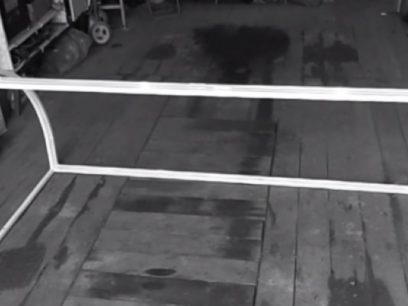
The build process may seem complicated. However, if you have in front of you a visual diagram of the finished product and additionally draw it yourself with the introduction of all sizes, it will be easier to cope with the task. If you do not have the skills to work with welding or a pipe bender, it is better to call the wizard. In the case when the construction of the foundation is planned, then this stage is carried out immediately after the preparation of the site.
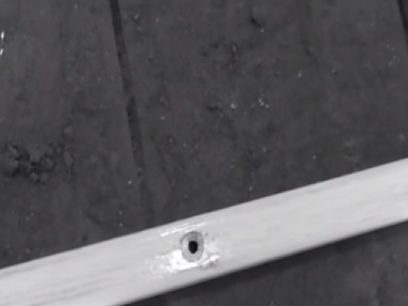
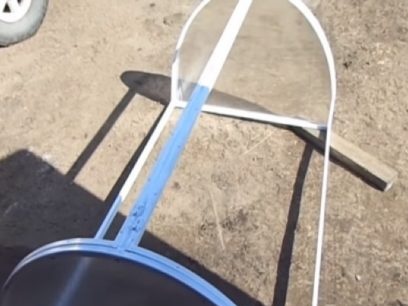
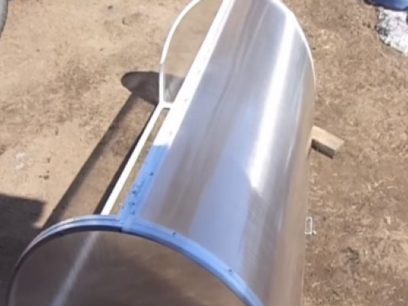
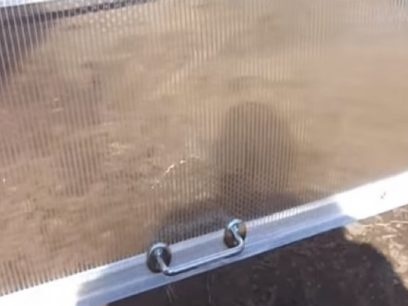
Care and maintenance tips
Summer residents who have already tested such a greenhouse share additional tips for use. In order not to break the fragile structural elements of the door, they open and close only by the handles, as carefully as possible, without clapping or jerking them. If the greenhouse for the winter remains on the site inside, put a few props that will help withstand the snow masses.
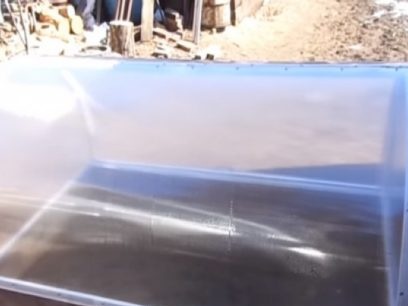
In the fall, the walls inside the greenhouse must be disinfected, otherwise the microorganisms accumulated over the summer will move to the plants in the next season, then it will be more difficult to get rid of them. When chips and other damages are formed on the frame, repairs are carried out immediately, especially on fast surfaces that require corrosion on metal surfaces. It is better to install the greenhouse on the foundation, so the lower part of the frame will be less susceptible to moisture.
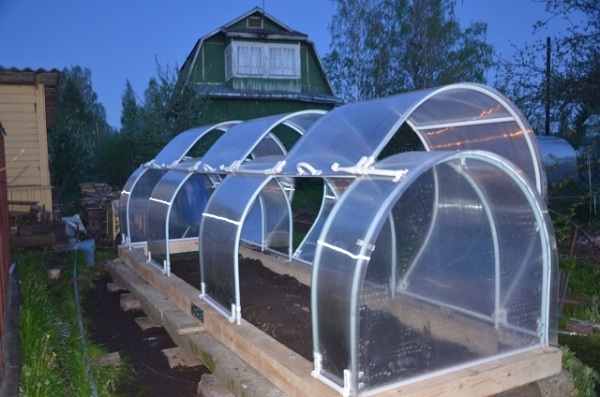 You may be interested in:
You may be interested in:Among summer residents, the Butterfly greenhouse is in great demand, as it is a simple, practical and at the same time quite reliable design. Owners of small plots will be able to rationally use the free space. Gardeners from the northern regions will not have to build temporary shelters annually to protect especially heat-loving crops from return frosts. This design deserves attention.

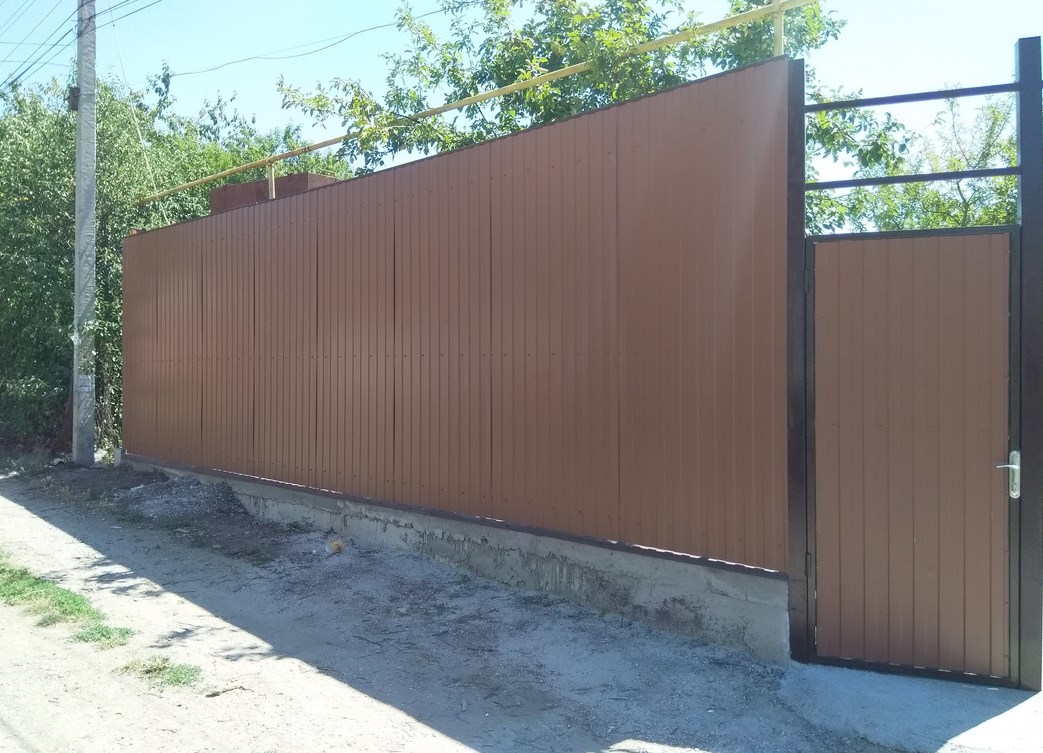
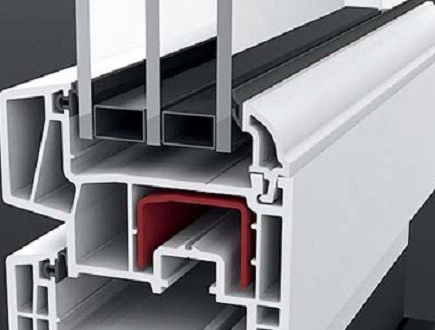
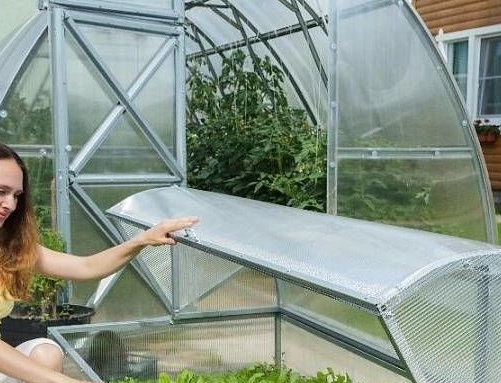
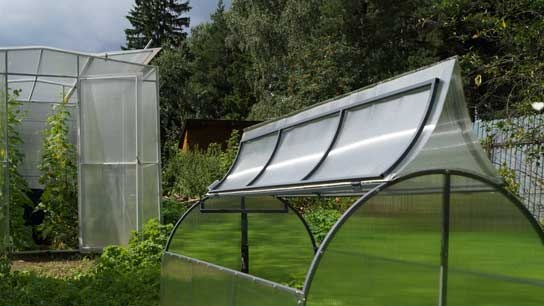 Why is a greenhouse open top?
Why is a greenhouse open top?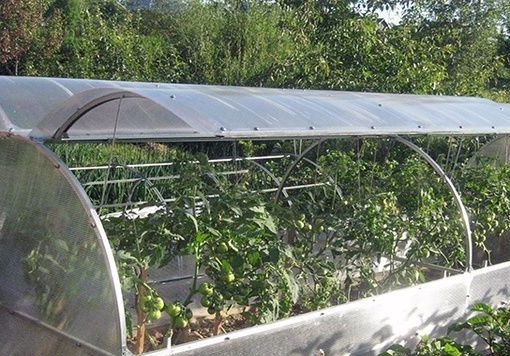 Greenhouse "Butterfly", is it worth it?
Greenhouse "Butterfly", is it worth it?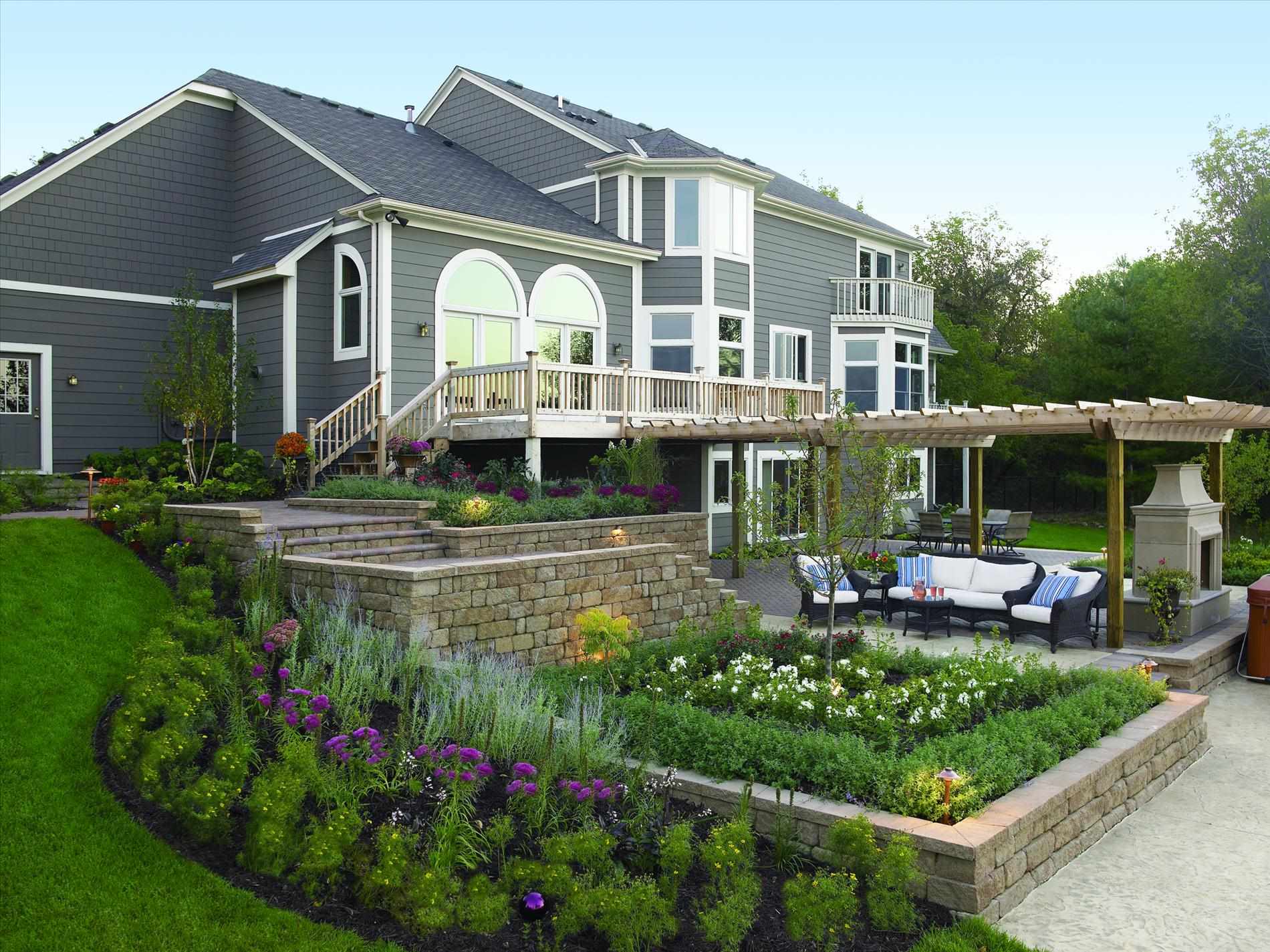 Do-it-yourself landscaping of an area of 8 acres: features of planning and zoning
Do-it-yourself landscaping of an area of 8 acres: features of planning and zoning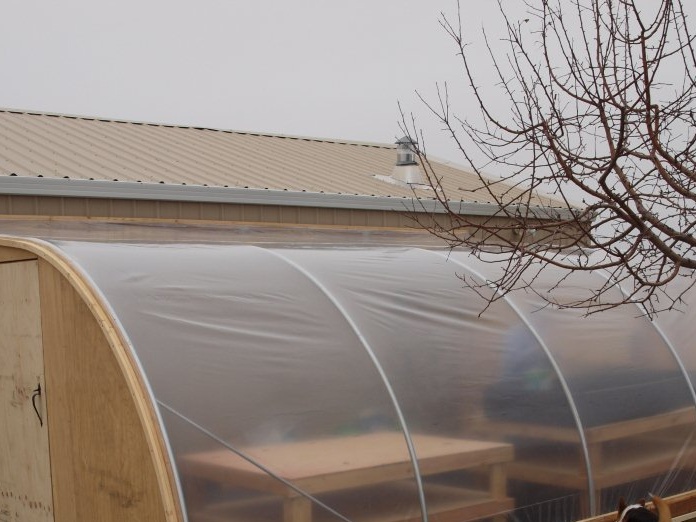 Shed greenhouse, pros and cons
Shed greenhouse, pros and cons